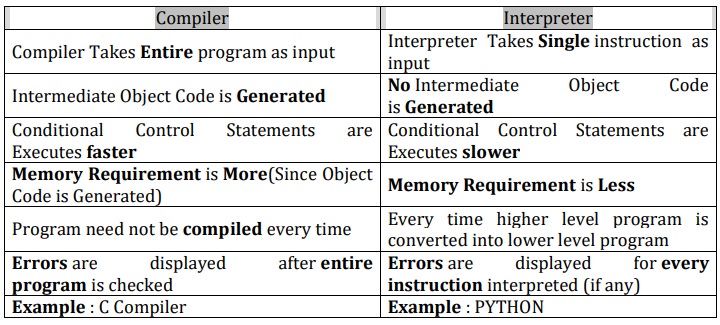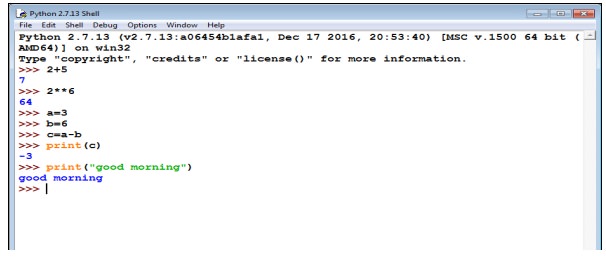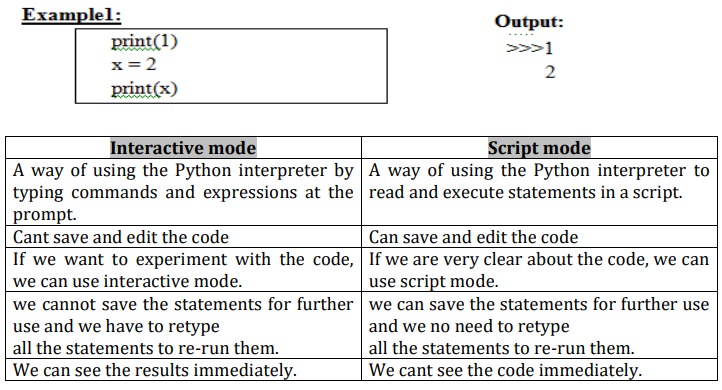Features, Applications, interpreter, Modes - Introduction to Python | Problem Solving and Python Programming : Data, Expressions, Statements
Chapter: Problem Solving and Python Programming : Data, Expressions, Statements
Introduction to Python
INTRODUCTION TO PYTHON:
Python is a general-purpose interpreted,
interactive, object-oriented, and high-level
programming language.
It was created by
Guido van Rossum during 1985- 1990.
Python got its
name from “Monty Python’s flying circus”. Python was released in the year 2000.
v Python is
interpreted: Python is
processed at runtime by the interpreter. You do not need to compile your program before executing it.
v Python is
Interactive: You can
actually sit at a Python prompt and interact with the interpreter directly to write your programs.
v Python is
Object-Oriented: Python
supports Object-Oriented style or technique
of programming that encapsulates code within objects.
v Python is a
Beginner's Language: Python is a
great language for the beginner- level programmers and supports the development
of a wide range of applications.
Python Features:
v Easy-to-learn: Python is clearly defined
and easily readable. The structure
of the program is very simple. It uses few keywords.
v Easy-to-maintain:
Python's source code is fairly
easy-to-maintain.
v Portable: Python can run on a wide variety of hardware
platforms and has the same interface
on all platforms.
v Interpreted:
Python is processed at runtime by the
interpreter. So, there is no need to
compile a program before executing it. You can simply run the program.
v Extensible:
Programmers can embed python within their
C,C++,Java script ,ActiveX, etc.
v Free and Open
Source: Anyone can freely distribute
it, read the source code, and edit
it.
v High Level
Language: When writing programs,
programmers concentrate on solutions
of the current problem, no need to worry about the low level details.
v Scalable: Python provides a better structure and support
for large programs than shell
scripting.
Applications
v Bit Torrent file sharing
v Google search engine, Youtube
v Intel, Cisco, HP, IBM
v i–Robot
v NASA
v Facebook, Drop box
Python interpreter:
Interpreter: To execute a program in a high-level language
by translating it one line at a time.
Compiler: To translate a program written in a high-level language into a
low-level language all at once, in
preparation for later execution.

MODES OF PYTHON INTERPRETER:
Python Interpreter is a program that reads and executes Python
code. It uses 2 modes of Execution.
1.
Interactive mode
2.
Script mode
1. Interactive mode:
v Interactive Mode, as the name suggests, allows
us to interact with OS.
v When we type Python statement, interpreter displays the result(s)
immediately.
Advantages:
v Python, in interactive mode, is good enough to
learn, experiment or explore.
v Working in interactive mode is convenient for
beginners and for testing small pieces of code.
Drawback:
v We cannot save the statements and have
to retype all the statements once again to re-run them.
In interactive
mode, you type Python programs and the interpreter displays the result:
>>>
1 + 1
2
The chevron, >>>, is the prompt the interpreter uses to indicate that it is ready for you to enter code. If you type 1 + 1, the
interpreter replies 2.
>>>
print ('Hello,
World!')
Hello, World!
This is an
example of a print statement. It displays a result on the screen. In this case,
the result is the words.

2. Script mode:
v In script mode, we type python program in a
file and then use interpreter to execute the content of the file.
v Scripts can be saved to disk for future use.
Python scripts have the extension .py,
meaning that the filename ends with .py
v Save the code with filename.py and run the interpreter in script mode to execute the
script.

Integrated Development Learning Environment (IDLE):
v Is a graphical
user interface which is completely written in Python.
v It is bundled with the default implementation
of the python language and also comes with optional part of the Python
packaging.
Features of IDLE:
Multi-window
text editor with syntax highlighting.
v Auto completion with smart indentation.
Python shell to display output with syntax highlighting.
Related Topics